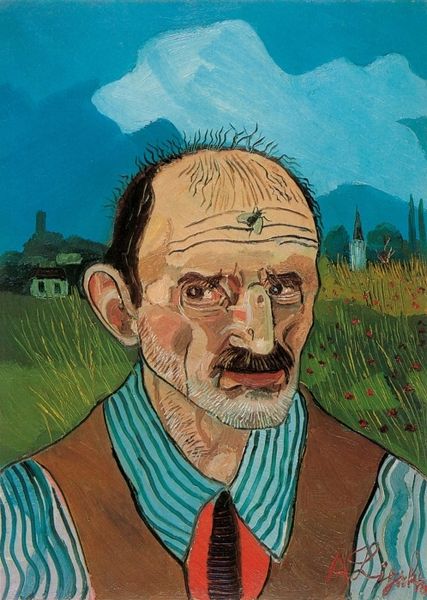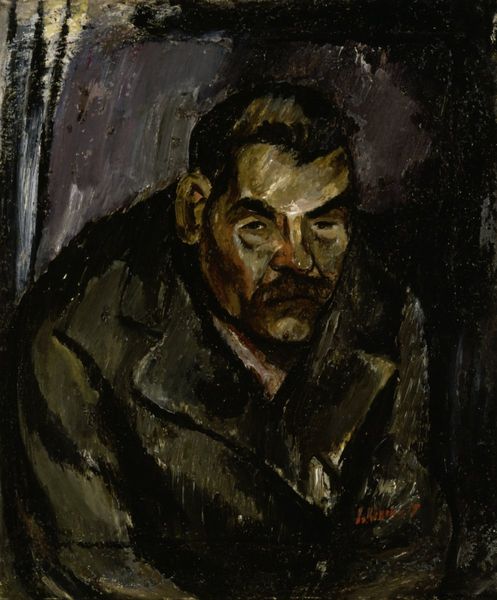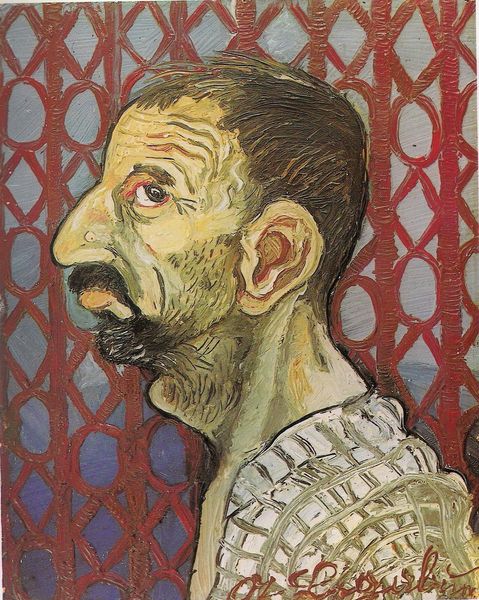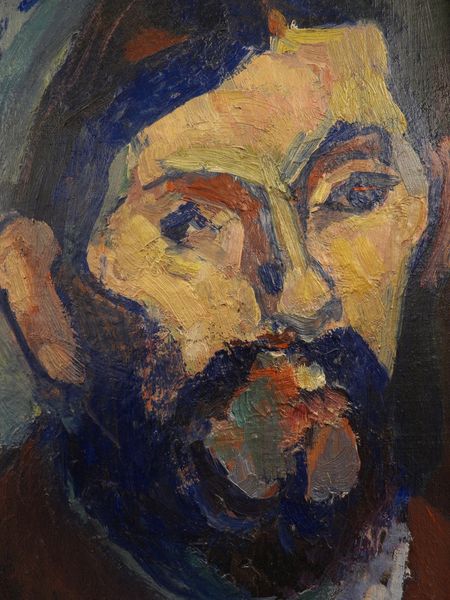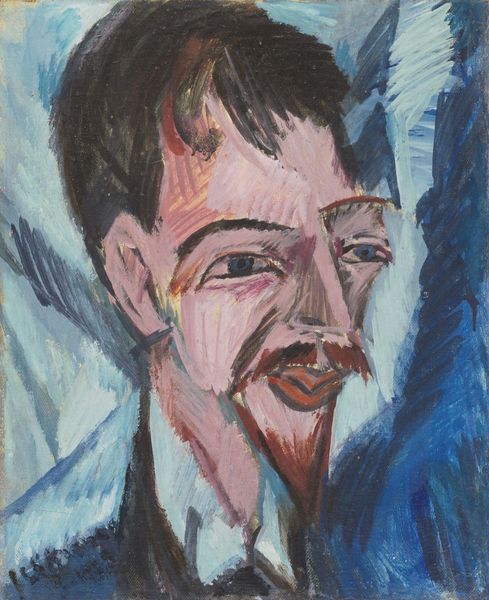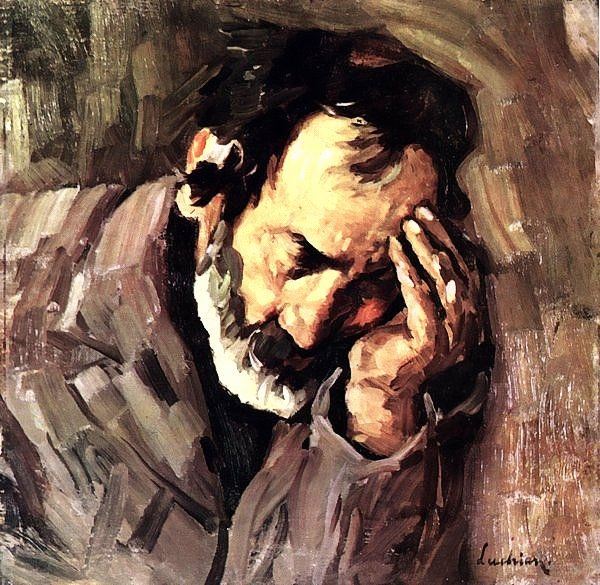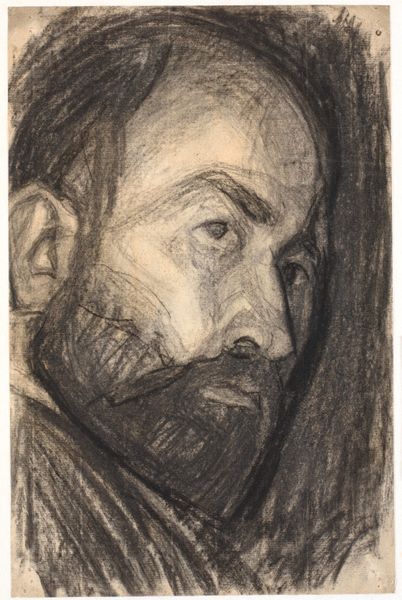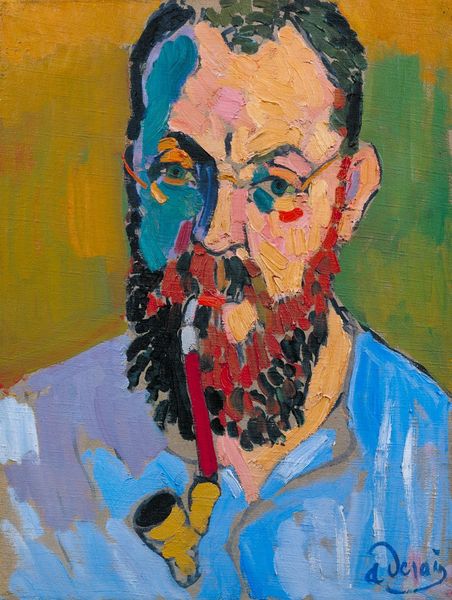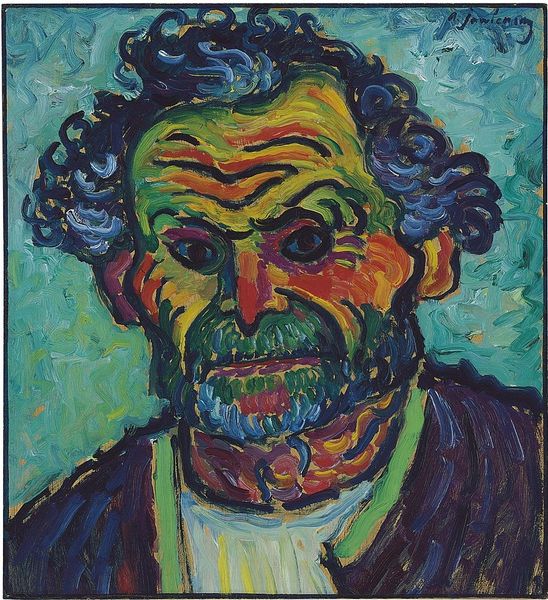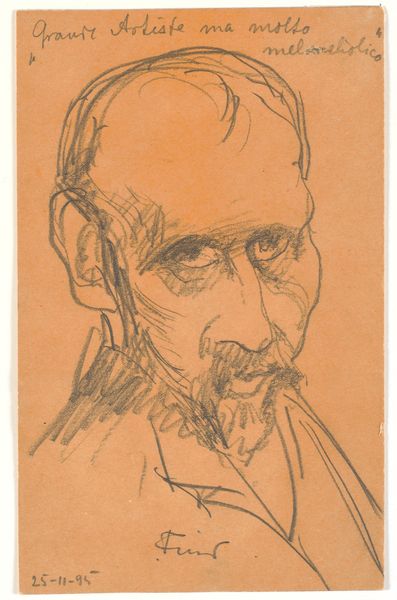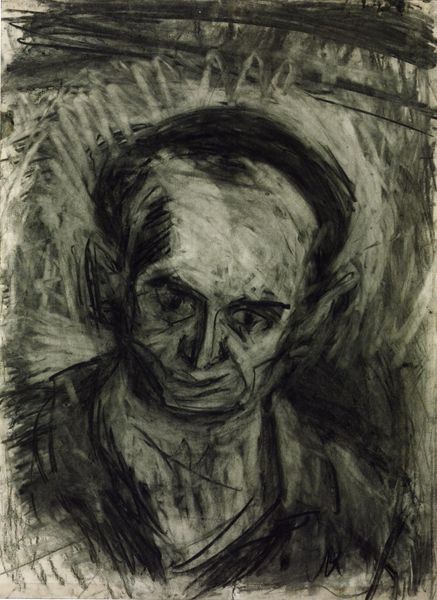
Copyright: Antonio Ligabue,Fair Use
Curator: Allow me to introduce Antonio Ligabue’s "Self-Portrait with Red Scarf," painted in 1956. It’s an oil on canvas. Editor: The first thing that strikes me is the raw intensity of the gaze, almost unsettling. And the feverish yellow and ochre palette chosen by Ligabue. The subject appears weathered. Curator: Ligabue worked in relative isolation, an outsider figure, with very little formal training, and faced significant social challenges throughout his life. The painting is undeniably expressionistic, it’s representative of an interesting modern moment. The painting showcases a specific brand of mental angst and self-scrutiny. Editor: Absolutely, the red scarf immediately draws your eye. Historically, red often signifies passion or even danger. In contrast to the dull background the subject is positioned in, I wonder, is it a symbol of inner turmoil and outward presentation of the self in this image? Curator: Ligabue’s biography can be read into it quite easily. His institutionalization surely impacted his approach to art making and perhaps led him to overemphasize how mental state can change our perspective on everyday objects. I do think the choice to locate the sitter amid grasses offers another angle as they were, historically, related to a kind of Arcadian idealism, only seen through a subjective lens. Editor: His use of oil paint is quite unique in its crude directness as it evokes vulnerability and perhaps a raw honesty as to the self, which only builds from there. Note the subject’s wrinkled and exaggerated facial features and you’ll have a real sense that something psychologically significant is happening. He sees himself and maybe the world in a distorted manner. Curator: This is exactly the type of confessional quality many institutions began seeking to elevate after the first and second World Wars. They were looking for artworks which could address human anxiety in relatable terms. The museum system needed to reinvent its purpose. Editor: His symbolic use of the red scarf creates a contrast with the subject’s somber expression, presenting both internal emotion with visual culture references as these began to coalesce in popular artistic approaches. Overall the impact here is haunting, compelling us to reflect on themes of selfhood and societal positionality. Curator: It's certainly a complex piece when viewed through the lens of its socio-political environment in the mid-twentieth century. Editor: Definitely, it seems clear how visual cues combine for striking psychological insight in the end.
Comments
No comments
Be the first to comment and join the conversation on the ultimate creative platform.
